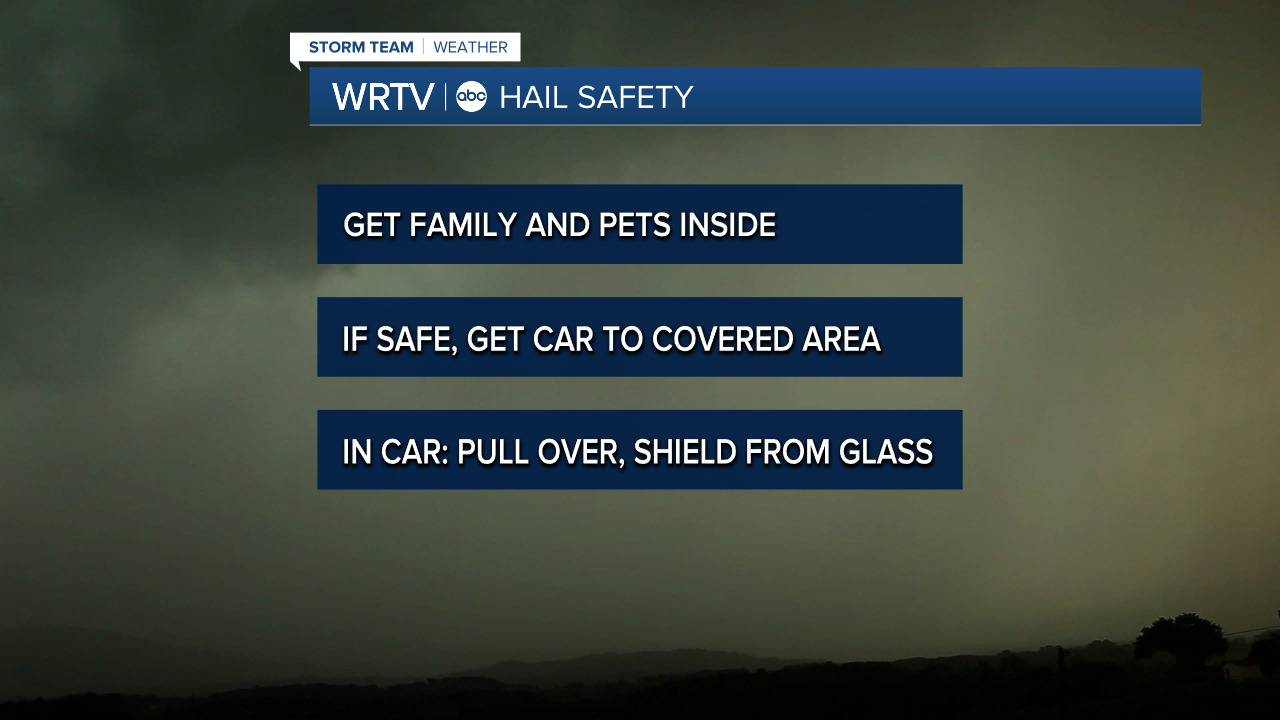INDIANAPOLIS — Indiana is in the top 10 when it comes to states with insurance claims from hail damage. That's according to the National Insurance Crime Bureau.
Many claims were filed last month when golf ball size hail pelted Castleton, leaving several cars with busted windows. Parts of central Indiana even reported hailstones as large as baseballs!

Hail can come in a range of sizes, and not all hail is destructive.
The stones can be as small as a quarter-inch or pea size, which is fairly common, up to grapefruit size which is pretty rare. Once a hailstone reaches quarter size, it's considered large enough to be severe and a thunderstorm warning is issued.

The largest hailstone on record fell to the ground in Vivian, South Dakota in 2010. It reached a whopping eight inches in diameter and weighed nearly two pounds.

So, how does hail form to begin with?
It all starts with frozen water drops drawn up into the thunderstorm. Each time the hailstone is tossed up into the storm, a layer of ice is added.
Eventually, the hailstone becomes too heavy for the winds lifting it up, and it falls to the ground. That's what determines just how large a stone is that falls from a thunderstorm.

No matter the size, getting hit by hail hurts. That's why it's important to get yourself, family and pets inside before any storm approaches.
If hail is expected, and you can do so safely, move your car into the garage if you have one. If you're in your car when hail begins to fall, try to pull over and do your best to shield yourself in case of broken glass.





